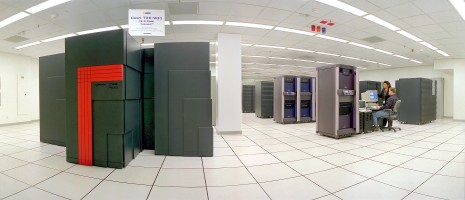50th Anniversary Seminar Series Kicks Off
Join us for a series of seminars celebrating NERSC's legacy and future in scientific supercomputing. » Read More
Boosting Carbon-Negative Building Materials
Locking greenhouse gases into building materials could store them safely for many years. Researchers using NERSC resources are advancing the science behind this idea. » Read More
NERSC Featured at APS
Watch a new video exploring NERSC's mission and impact. It was featured at the American Physical Society's annual meeting. » Read More
Getting a Peek Into Ice Giants
Scientists are using NERSC's Perlmutter supercomputer to study the interior chemistry of ice giant planets like our solar system's Neptune. » Read More
50 Years of NERSC Firsts
Get the highlights from our last half-century of scientific supercomputing. » Read More
National Energy Research Scientific Computing Center
Computing at NERSC
Now Playing
Some Scientific Computing Now in Progress at NERSC
Did You Know?
When Did NERSC Start Naming Systems in Honor of Scientists?
Since NERSC moved to Berkeley Lab in 1996, the Department of Energy’s primary scientific computing facility has named all of its supercomputers after scientists.
The naming tradition started in the late 1990s with NERSC’s flagship Cray T3E system. It was called “MCurie” in honor of Marie Curie, the French-Polish physicist and chemist known for her pioneering research on radioactivity. In November 1997, MCurie was the fifth most powerful supercomputer in the world. The system had 512 processors and a theoretical peak speed of 461 billion calculations per second (461 Gigaflops). At the time, it was the nation's biggest supercomputer for unclassified research.
NERSC@50

NERSC@50 Seminar Series Kicks off April 15 April 8, 2024

50 Years of NERSC Firsts January 25, 2024












